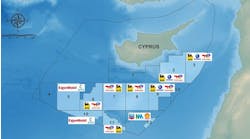Offshore staff
ST PETERSBURG, Russia – Gazprom Neft has completed testing of new seabed seismic stations for offshore exploration in the Sea of Okhotsk off northeast Russia.
The program started in 2019, with support from the Ministry of Industry and Trade of the Russian Federation.
Aviation and Marine Electronics NPP designed the ‘Flounder’ seabed stations with the first consignment undergoing successfully laboratory testing.
Marine Arctic Geological Expedition and ROSGEO are preparing to test the devices on offshore license blocks for Gazprom Neft later this year.
The forerunner model of these seabed stations, known as the CRAB, proved its capabilities during seismic exploration on the Ayashsky license block in the Sea of Okhotsk in 2019.
Flounder’s cylindrical shape leads to improved ergonomics and makes it easier to see even in poor visibility, Gazprom Neft said.
The stations contain new hydrophones and geophones, a compass and an acoustic module, all designed to improve the quality of data collection and processing.
The next planned generation of seabed stations will feature a mechanism that allows them to be lowered to the seabed and lifted back to the vessel automatically, rather than manually.
This mechanism, which should be developed by 2022, should help speed up offshore seismic surveys.
Battery modules in the stations can be quickly replaced for virtually uninterrupted operation.
03/31/2021



